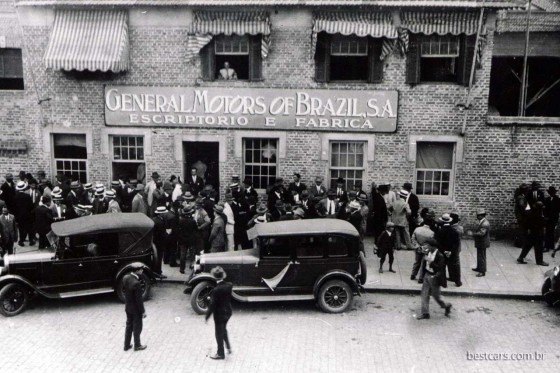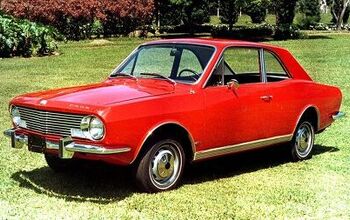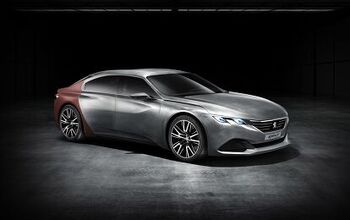Dispatches Do Brasil: Nonagenarian General

The first car Brazilians ever saw in their own country was brought in from France in 1890 by Alberto Santos Dumont of later first dirigible, plane and wristwatch glory. It caused quite a stir in the streets of Rio de Janeiro. Soon, other wealthy men began importing cars and there are reports of street racing and accidents between the cars themselves, pedestrians and horses.
In 1903, the state of São Paulo promulgated the first laws pertaining to auto traffic. At the time only 16 cars were officially registered in all the state. It was a time of great change on Brazil. The Republic had been born in 1889 while all slaves had been set free just a year before. Immigrants poured into the country, helping the population to double then triple in a few short decades. Only the US and Argentina attracted more immigrants at the time.
Those immigrants proved instrumental to the development of industry and agriculture in Brazil. Though industrially the take off was slow, Brazil became the coffee king and the roaring 20s brought unprecedented wealth to the country. By 1923, the mark of 30 000 registered automobiles was reached.
This ebullition attracted the attention of a company based in far off Detroit. Interested in chasing the new found wealth circulating in this country, General Motors opened for business by registering itself at a Public Notary in São Paulo on January 26, 1925 under the name of Companhia Geral de Motores do Brasil. Or perhaps it was just chasing eternal rival Ford that opened up here in 1919 and began production of CKD Model Ts in 1921.
Just eight months later, the assembly line in a calm neighborhood in São Paulo was inaugurated. A Chevrolet delivery panel van was the first vehicle put together there. General Motors would produce other all of their brands here, so CKD Cadillacs, Buicks, Oldsmobiles, Oaklands and Pontiacs were all assembled. Production was slow at first, just 25 cars a day. In the following year, production reached 40 vehicles a day. In 1928, the factory was up to a feverish 150 vehicles.
1927 saw the production of the 25th thousand GM car, another Chevrolet. To witness the event, very important people from the home office and New York bankers were invited. The record shows that car was put together in just 20 minutes.
At the end of the day, the 800 workers went home and the patio would be brimming with cars. The next day all cars would be gone. In that time GM had around 150 professionals called caravanistas. Their function was to drive the car from the factory to wherever the buyer lived, wherever that would be in the country.
In 1928, the city of São Paulo was inhabited by 700,000 people and the population of Brazil had grown to more than 34 million. GM produced its 50,000th car, again a Chevrolet. It had outgrown the capacity of their first industrial site.
They moved to São Caetano do Sul, then still a small, sleepy and bucolic city neighboring São Paulo. The huge facility completely dominated the cityscape. There, GM do Brasil has its corporate headquarters and factory to this day.
General Motors has been a fundamental company in the history of the automobile in this country. In 1957, the first fully Brazilian vehicle was built by GM, a light truck. In 1958, the first car in the form of a pickup, the Amazona or 3.100 taking advantage of President Juscelino Kubtischek’s program of stimulating local production. Under protective measures instituted by those policies, GM diversified and produced batteries, air conditioners, and the famous Frigidaire refrigerators (the gold standard in those days and more than 2 million units were bought by Brazilians).
In 1973, the Chevette made its worldwide debut here. Though that was pretty exiting, the Chevette marked the emergence of GM Brazil as an engineering center for global GM, a position it still enjoys today.
In the 90s, the Brazilian market was suddenly wide open. GM was one of the first to take advantage of this and a rapid succession of thoroughly modern Opel products were launched in Brazil: Omega, Vectra and Corsa. This proved so successful that GM would occupy second place, seriously threatening Volkswagen’s lead.
Then a period of complacency. Administrating the crisis, several GM do Brasil Presidents would go on to lead global GM. Due to the trouble brewing at GM U.S., local GM starved for product and slowly, but surely, its line became uncompetitive. As the 10s started, Opel-based Brazilian Chevrolet products disappeared and were substituted by GM Korea products. Though that has left Opel-widows pulling their hair and wailing in the desert, the fact is the move has proved successful. So much so that Chevrolet is now claiming to be the most beloved auto company of Brazilians since if fleet sales (which include government purchases in this country) are discounted, Chevrolet is the most sold auto brand to private buyers two years running.
To celebrate GM do Brasil becoming a nonagenarian local and global GM top suits came to Brazil to show off GM’s new logistic center (double the size of the previous one and completely computerized). Global Chevrolet President Dan Ammann came down and detailed the 6.5 billion real investment announced on the occasion. It would be used to modernize motors and factories and develop a new 3-cylinder 1.0 and transmissions. He also highlighted that Brazil is Chevrolet’s second largest market worldwide, and GM’s third.
General Motors do Brasil has three car factories in Brazil. Besides the 80-year old unit in São Caetano do Sul, there is one in São José dos Campos and another in Gravataí. In Mogi das Cruzes there is another industrial site producing stamped components and parts, the logistic center is in Sorocaba, testing grounds in Indaiatuba and an engine factory in Joinville. In São Caetano do Sul, besides the factory and corporate offices, there is a technological center capable of designing and developing cars and motors from the ground up.
In 90 years General Motors do Brasil has produced over 14.5 million cars. From the humble beginnings in a warehouse in a calm São Paulo neighborhood, GM do Brasil has grown into a giant in the Brazilian car-scape and a vital part of global GM. It has earned Brazilian’s respect and manages to avoid the Fiat-Volkswagen rivalry, being one brand that seems to attract all Brazilians. It has launched hits and duds, has pushed the market and watched from the sidelines others fight it out.
With products like Onix, Spin and Cruze, and halos like the Camaro, General Motors do Brasil is living in prosperous times and, as always, is fundamental in keeping the mothership afloat.

More by Marcelo de Vasconcellos
Latest Car Reviews
Read moreLatest Product Reviews
Read moreRecent Comments
- Jeff Self driving cars are not ready for prime time.
- Lichtronamo Watch as the non-us based automakers shift more production to Mexico in the future.
- 28-Cars-Later " Electrek recently dug around in Tesla’s online parts catalog and found that the windshield costs a whopping $1,900 to replace.To be fair, that’s around what a Mercedes S-Class or Rivian windshield costs, but the Tesla’s glass is unique because of its shape. It’s also worth noting that most insurance plans have glass replacement options that can make the repair a low- or zero-cost issue. "Now I understand why my insurance is so high despite no claims for years and about 7,500 annual miles between three cars.
- AMcA My theory is that that when the Big 3 gave away the store to the UAW in the last contract, there was a side deal in which the UAW promised to go after the non-organized transplant plants. Even the UAW understands that if the wage differential gets too high it's gonna kill the golden goose.
- MKizzy Why else does range matter? Because in the EV advocate's dream scenario of a post-ICE future, the average multi-car household will find itself with more EVs in their garages and driveways than places to plug them in or the capacity to charge then all at once without significant electrical upgrades. Unless each vehicle has enough range to allow for multiple days without plugging in, fighting over charging access in multi-EV households will be right up there with finances for causes of domestic strife.


































Comments
Join the conversation
Thank you Marcelo for an entertaining and educational story. You've left me hungry for the next installment of the truth about cars in Brazil.
ah, Chevette! I remember helping a female firend car-shop in the late '70s, and test-driving a Chevette with her. Complete POS - gutless engine, cramped interior, no redeeming features at all and not at all competitive with Japanese cars of the day. She would up with a Dodge Colt, and was very happy with it. Also helpless in any kind of snow. You saw Chevettes get stuck in places where other cars just drove on.